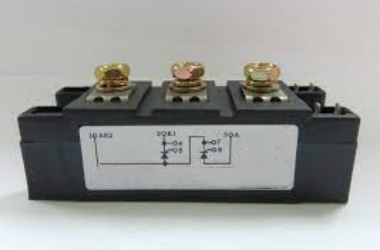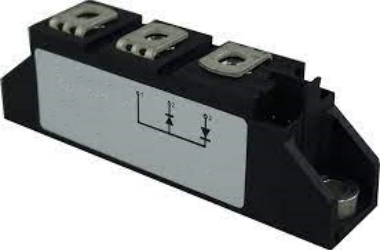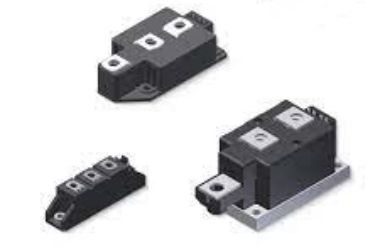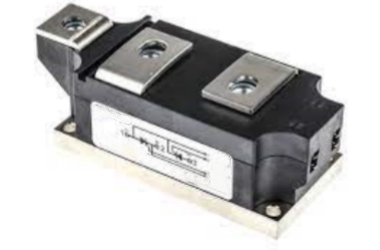Comprehensive testing to ensure the performance and reliability of the thyristor module
With the rapid development of power electronics technology, the thyristor module, an essential semiconductor device, plays a decisive role in heating equipment control and other fields. The thyristor module is a semiconductor device specially used for controlling heating equipment. It combines multiple thyristors, diodes and other components to control the current and voltage of the heating equipment, thereby managing the heating process.

The thyristor module has the following features:
1. Efficient and stable: It has high switching speed and stability and can work stably in harsh environmental conditions.
2. High integration: multiple thyristors and diodes are integrated into one module for easy use and maintenance.
3. Easy to control: Its on and off can be easily controlled through the trigger signal to realize the switching operation of the heating equipment.
4. Protection function: It has over-voltage, over-current and other protection functions, which can protect the circuit from over-voltage, over-current and other damage.
The purpose and significance of thyristor module testing
The purpose of thyristor module testing is to ensure that each module has excellent performance and reliability before leaving the factory to achieve the best performance in actual applications. Potential problems can be discovered and solved promptly through testing and improving product quality. It can also provide feedback to R&D personnel to help them continuously optimize product design and performance. Therefore, thyristor module testing significantly improves product quality control and production efficiency.

How to perform thyristor module testing?
Conducting thyristor module testing requires following specific processes and specifications to ensure the accuracy and reliability of test results. The following are the general steps for conducting thyristor module testing:
1. Prepare test equipment: Prepare corresponding test equipment and tools, including power supply, load, test instruments, etc.
2. Build test circuits: Build corresponding test circuits according to product specifications and test requirements to ensure the stability and reliability of the test environment.
3. Set test conditions: Set corresponding test conditions, such as test voltage, current, temperature and other parameters, to ensure the accuracy and repeatability of test results.
4. Carry out the test: Carry out the test according to the set test conditions and observe and record the changes in the test data.
5. Analyze test results: Conduct detailed analysis and processing of test data to evaluate product performance and reliability.
6. Feedback and improvement: Feed back the test results to the R&D department, make corresponding improvements and optimizations based on the feedback, and continuously improve product quality.

Analysis and interpretation of test results of thyristor module testing
1. Observe the test data: First, observe the changes in the test data to see any abnormalities or non-compliance with specifications.
2. Check the test conditions: Confirm whether the test conditions meet the specifications and requirements to ensure the accuracy and reliability of the test results.
3. Analyze electrical performance: Conduct a detailed analysis of electrical performance, including on-resistance, reverse breakdown voltage, gate trigger voltage and other parameters. Compare the requirements in the specifications to see if the product meets the design requirements.
4. Check the mechanical properties: Check the mechanical properties, including the appearance, size, weight and other parameters of the module. Confirm whether the structural design of the module is reasonable and meets the requirements of the use environment.
5. Analyze thermal performance: Analyze thermal performance, including module power consumption, temperature and other parameters. Evaluate whether the heat dissipation design of the module is reasonable and meets the requirements for long-term stable operation.
6. Functional test: Conduct a functional test to check whether the module's function is normal. For example, the response speed of the trigger signal, the ability to control the current, etc.
7. Reliability test: Carry out a reliability test and conduct a long-term working test on the module by simulating the conditions in the actual use environment to evaluate the reliability and stability of the module.
8. Comparative analysis: Comparative analysis of thyristor modules from different batches or models to determine the differences and room for improvement between products.
9. Data processing and reporting: Organize test data into detailed reports, including test conditions, test results, data analysis, etc. For the reference and use of customers or R&D personnel.

Thyristor module price
Through comprehensive testing, we can ensure the performance and reliability of the thyristor module and provide customers with the highest quality products and services. If you want to know more about the latest news about the thyristor module or want to purchase the thyristor module, don't hesitate to contact us to initiate an inquiry.
Thyristor module suppliers
PDDN Photoelectron Technology Co., Ltd. is a high-tech enterprise focusing on the manufacturing, R&D and sales of power semiconductor devices. Since its establishment, the company has been committed to providing high-quality, high-performance semiconductor products to customers worldwide to meet the needs of the evolving power electronics industry.
It accepts payment via Credit Card, T/T, West Union, and Paypal. PDDN will ship the goods to customers overseas through FedEx, DHL, by sea, or by air. If you want high-quality THYRISTOR MODULES, please inquire; we will help.
